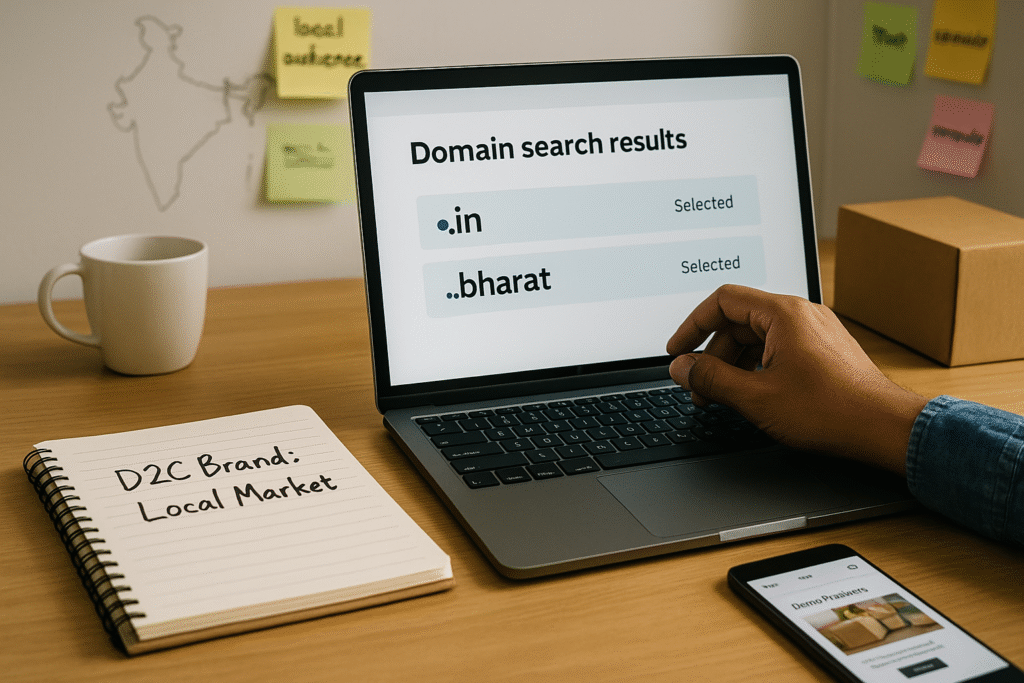Indian direct-to-consumer brands and small-to-medium enterprises are increasingly choosing .IN and .BHARAT domains over traditional .com extensions, signaling a shift in how regional businesses approach digital identity in the world’s most populous market.
The trend is particularly pronounced among D2C companies targeting India’s tier-2 and tier-3 cities, where local credibility often outweighs global aspirations. For businesses focused exclusively on domestic customers, a .IN domain telegraphs “for India, by India” in ways that generic .com extensions can’t match.
The Economics Drive Adoption
Premium .com domains command prices that make no sense for bootstrapped Indian SMEs. A business wanting BrandName.com might face acquisition costs exceeding ₹50 lakhs—capital that could fund six months of operations or an entire regional marketing campaign.
Meanwhile, BrandName.in sits available for annual registration fees under ₹1,000. For founders operating on tight margins, that’s not even a financial decision worth deliberating. The capital saved goes directly into inventory, logistics, or customer acquisition.
When .BHARAT Makes Strategic Sense
The .BHARAT extension—introduced to provide an Internationalized Domain Name option using Devanagari script—is gaining traction among brands targeting Hindi-speaking markets. While adoption remains lower than .IN, businesses serving customers in Uttar Pradesh, Madhya Pradesh, and Rajasthan are experimenting with .BHARAT domains as primary or supplementary web addresses.
The logic is straightforward: if your target customer thinks in Hindi, why force them to navigate English-language domains? A .BHARAT domain in Devanagari script removes linguistic friction and signals cultural alignment.
The Trust Factor in Regional Markets
Here’s what changed: consumer perception. A decade ago, Indian shoppers viewed non-.com domains with suspicion. Today’s digitally native generation—raised on apps, mobile-first experiences, and regional language content—barely registers domain extensions as trust signals.
For D2C brands selling regional products like handloom textiles, organic foods, or Ayurvedic products, a .IN domain actually enhances credibility. It signals authenticity and local roots rather than compromise or budget constraints.
SEO Reality Check
Google’s position remains consistent: domain extensions don’t directly impact search rankings. A well-optimized .IN site can outrank poorly maintained .com competitors in Indian search results. Geographic targeting through Google Search Console matters far more than top-level domain choice.
That said, Indian searchers still exhibit slight .com bias in click-through rates for certain queries—particularly in categories like finance, technology, and education where .com domains retain prestige associations. But for e-commerce, lifestyle brands, and regional services, the extension bias has largely evaporated.
What This Means for Domain Investors
Premium generic .IN domains are appreciating as domestic adoption grows. Categories like electronics, fashion, and food delivery show particular strength. Investors betting exclusively on .com portfolios are missing India’s domestic digital economy, which increasingly operates on local infrastructure.
The .BHARAT market remains speculative. Adoption is growing but hasn’t reached critical mass where secondary market liquidity exists. Early investors are betting on long-term Hindi internet penetration rather than immediate resale opportunities.
The Bigger Picture
India’s ccTLD surge reflects a maturing digital economy that’s stopped apologizing for not being global-first. When your addressable market is 1.4 billion people within national borders, optimizing for domestic credibility makes more strategic sense than chasing international perception.


